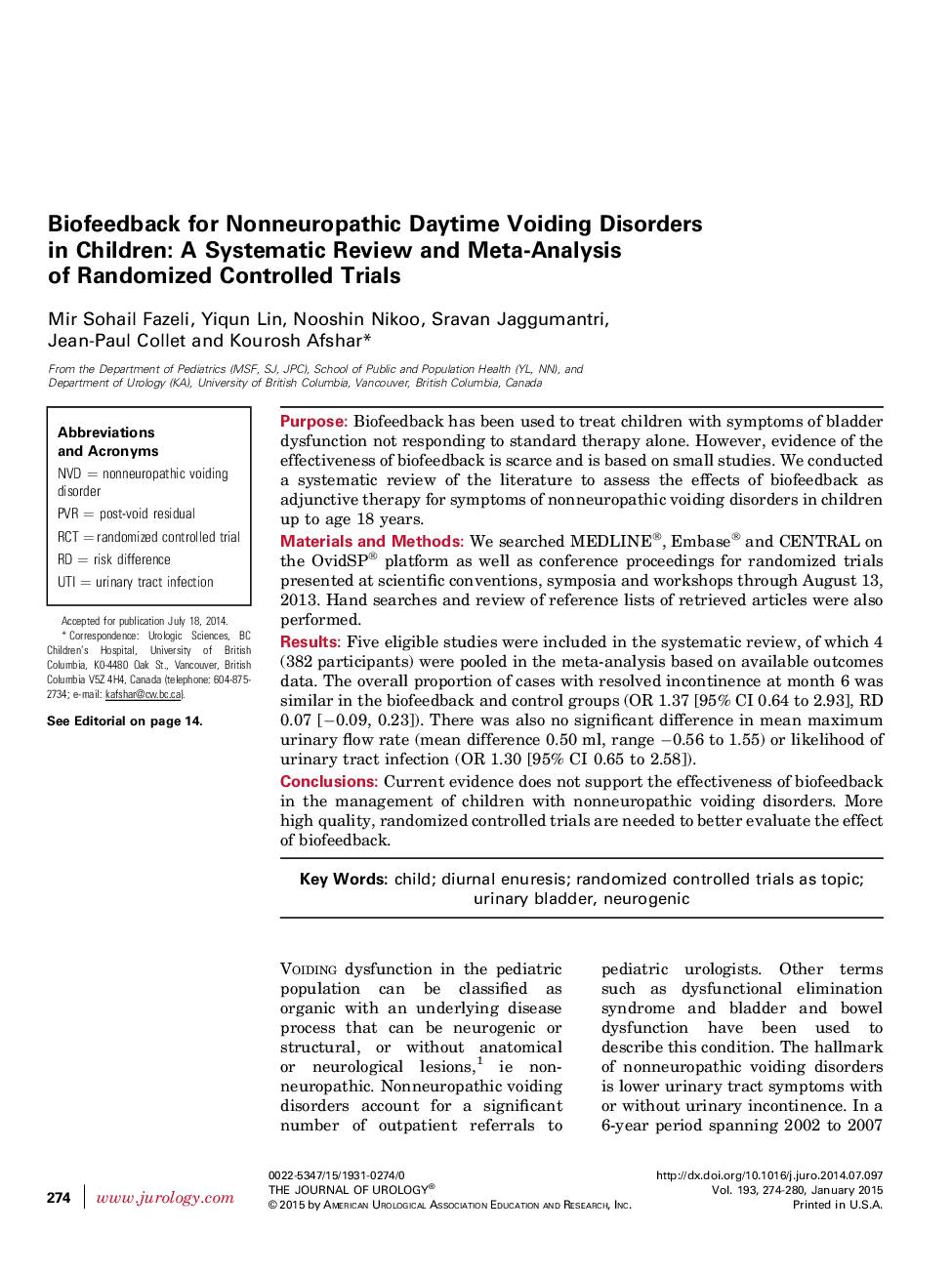| Article ID | Journal | Published Year | Pages | File Type |
|---|---|---|---|---|
| 3859882 | The Journal of Urology | 2015 | 7 Pages |
PurposeBiofeedback has been used to treat children with symptoms of bladder dysfunction not responding to standard therapy alone. However, evidence of the effectiveness of biofeedback is scarce and is based on small studies. We conducted a systematic review of the literature to assess the effects of biofeedback as adjunctive therapy for symptoms of nonneuropathic voiding disorders in children up to age 18 years.Materials and MethodsWe searched MEDLINE®, Embase® and CENTRAL on the OvidSP® platform as well as conference proceedings for randomized trials presented at scientific conventions, symposia and workshops through August 13, 2013. Hand searches and review of reference lists of retrieved articles were also performed.ResultsFive eligible studies were included in the systematic review, of which 4 (382 participants) were pooled in the meta-analysis based on available outcomes data. The overall proportion of cases with resolved incontinence at month 6 was similar in the biofeedback and control groups (OR 1.37 [95% CI 0.64 to 2.93], RD 0.07 [−0.09, 0.23]). There was also no significant difference in mean maximum urinary flow rate (mean difference 0.50 ml, range −0.56 to 1.55) or likelihood of urinary tract infection (OR 1.30 [95% CI 0.65 to 2.58]).ConclusionsCurrent evidence does not support the effectiveness of biofeedback in the management of children with nonneuropathic voiding disorders. More high quality, randomized controlled trials are needed to better evaluate the effect of biofeedback.
